The risk of Covid-19 infection in a room, a bar and a classroom, calculated with a simulator based on the preventive measures used
Don't store avocado like this: it's dangerousAs is now known, closed places are more dangerous for coronavirus contagion, but the risks can be minimized by implementing a series of useful strategies to combat aerosol contagion. An article from El País presents 3 different scenarios with the relative probability of infection depending on the ventilation, use of the mask and the duration of the encounter.
The risk of Covid-19 infection in the 3 scenarios, a living room (or an office), a bar and a classroom, was calculated using a tool, to be precise a simulator, developed by José Luis Jiménez, an expert in the chemistry and dynamics of particles in air at the University of Colorado.
The model assumes that people practice two-meter social distancing and that there are no immune people.
Before seeing how contagion occurs in different environments, it is necessary to make an important premise. As El País specifies, at the beginning of the pandemic, especially the large droplets that are expelled by coughing or sneezing were considered dangerous, with the passage of time it was understood instead that even just talking, or even more screaming or singing for a long time, in one closed and poorly ventilated space greatly increases the risk of contagion.
The tiny contagious particles (aerosols), if there is not a properly ventilated environment, remain suspended in the air and can be contagious within 5 meters of the infected person and for many minutes.
But now let's see what happens if there is a Covid-19 positive person in each of the 3 scenarios.
Index
Living room at home or office
The simulation concerns the presence of 6 people (one of which is infected) who gather in a room. As El País points out, 31% of outbreaks in Spain occur in just this way, during meetings between family and friends. What happens in this case? If the 6 people remain in the room for 4 hours without masks or adequate ventilation and talking loudly, all 5 people would be infected.
If everyone wore the mask, the risk would drop to 4 new infections. In practice, the simulation argues that the mask is not sufficient to lower the risk of contagion in the event of long exposure.
The risk of infection is significantly lowered (only one infected person or none) if each member of the group wears the mask, in a properly ventilated environment and if the meeting is reduced in terms of duration.
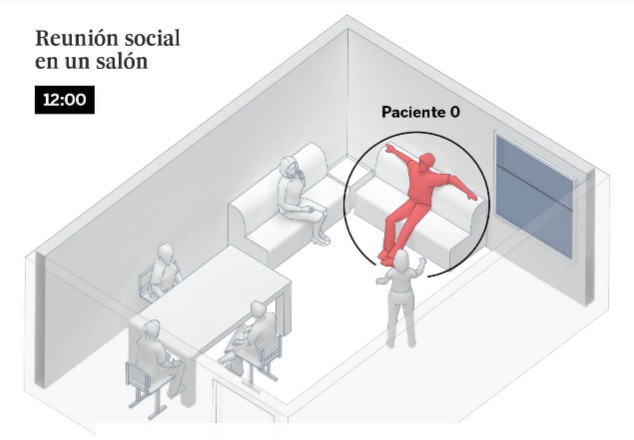
©The Country
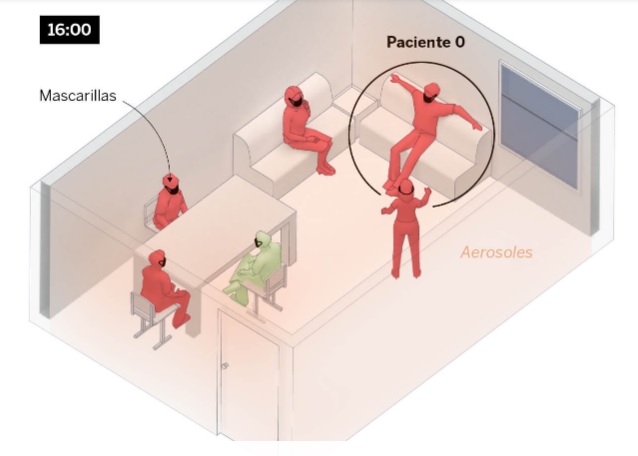
©The Country
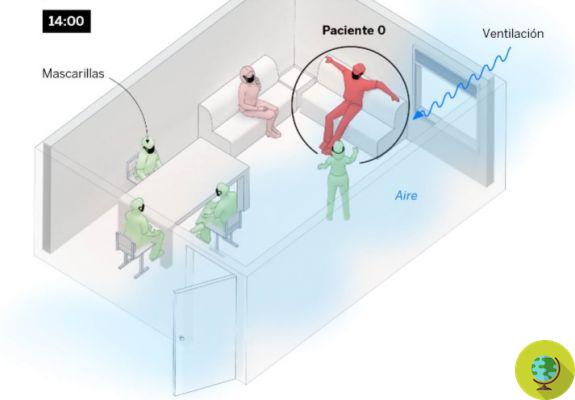
©The Country
Cash
Bars are also possible places of contagion. The simulation involved a place where there are 15 people who consume and three employees. The doors are closed and there is no adequate ventilation.
If no measures are used, after 4 hours 14 customers will be infected, if instead the masks are always used, it goes to 8 infections.
The probability of contagion drops to only one person if the premises are properly ventilated, the time spent in the bar is reduced and masks are worn.
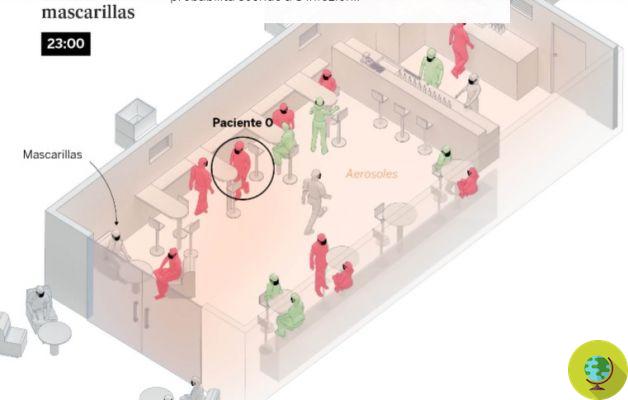
©The Country
Class
Despite the prejudice that schools are among the most dangerous places of contagion, El País is keen to emphasize that educational centers represent only 6% of Spanish outbreaks.
In the classroom, the dynamics of contagion are very different if patient zero is a student or a teacher. This is because teachers speak much longer, often raising their voices, which means that contagious particles are expelled more easily.
In this scenario it is more important than ever that the classrooms are well ventilated with a special ventilation system or, as is also recommended in our schools, keeping the windows open.
The simulation shows that, if the teacher is sick, and no preventive system is put in place, after 2 hours in a class of 24 students, 12 would be infected. If everyone wore a mask it would drop to 5.
Also in this case, if all the necessary precautions were taken, including ventilation (one should also stop every hour to change the air), the risk of contagion would drop drastically.
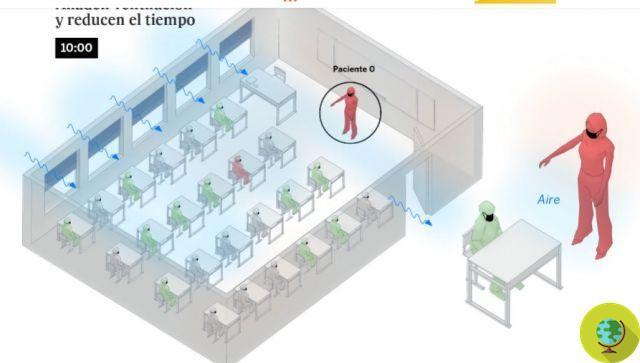
©The Country
The conclusions
The simulation assumes that subjects maintain a safe distance thus eliminating the risk of droplet infection, but this is not enough.
In practice, what we have seen is that in all 3 scenarios just use the various preventive measures at the same time (ventilate properly, shorten the duration of the meetings and wear a mask) it really reduces the risk of contagion.
The open air is therefore always the ideal scenario for any type of meeting. In fact, the infectious particles dilute rapidly outdoors.
Source: The Country
Read also:
- Indoors, airborne transmission of the coronavirus must be taken seriously, 239 scientists write to WHO
- Does air conditioning help spread the coronavirus? The Chinese study conducted on 3 infected families in a restaurant
- Coronavirus: in closed spaces it would resist in the air for 30 minutes and up to 4,5 meters. The Chinese study inside a bus
- Covid-19: how long do antibodies last? Can you get sick again?
- The WHO confirms: the coronavirus is not transmitted by air, but only by saliva droplets


























